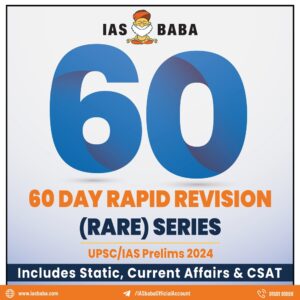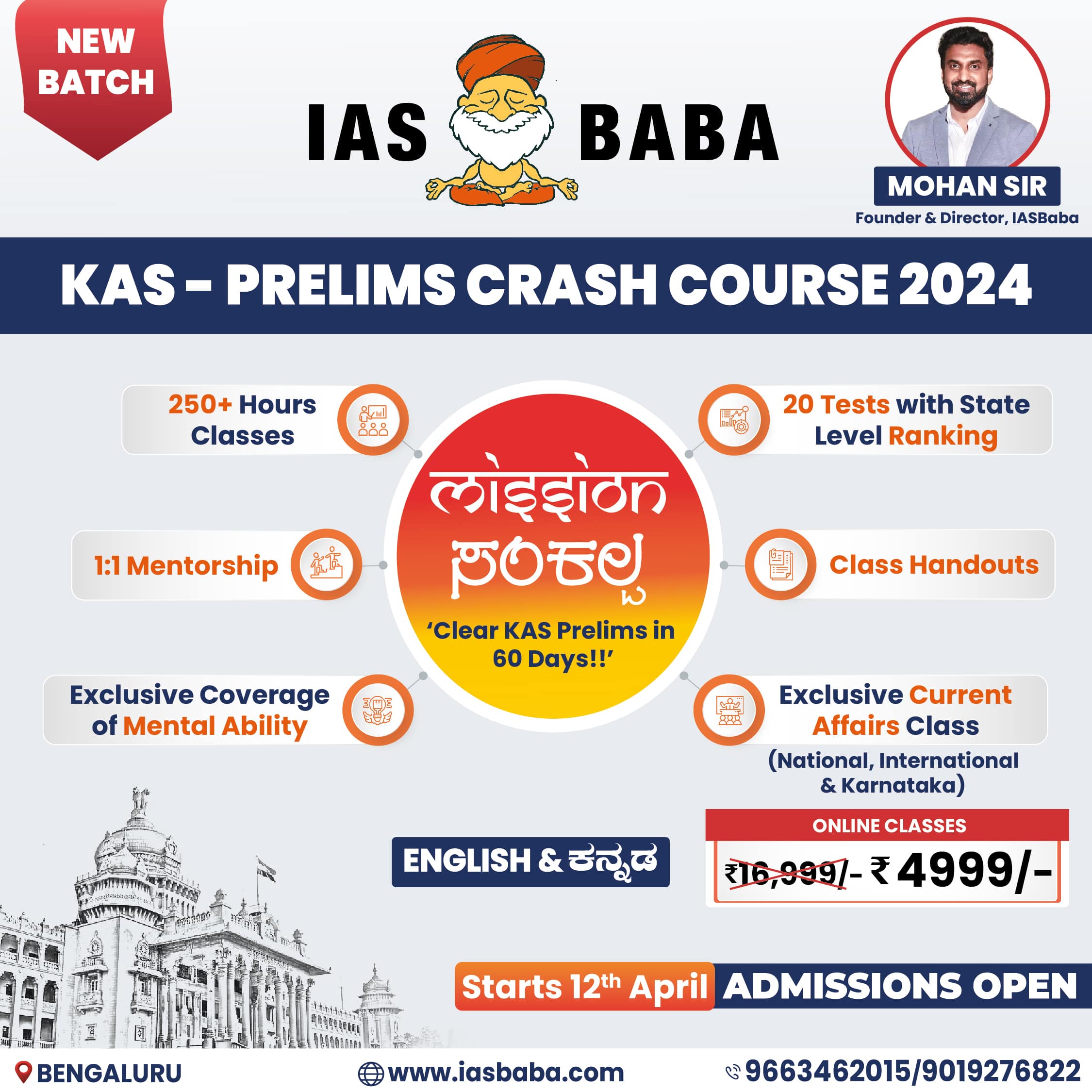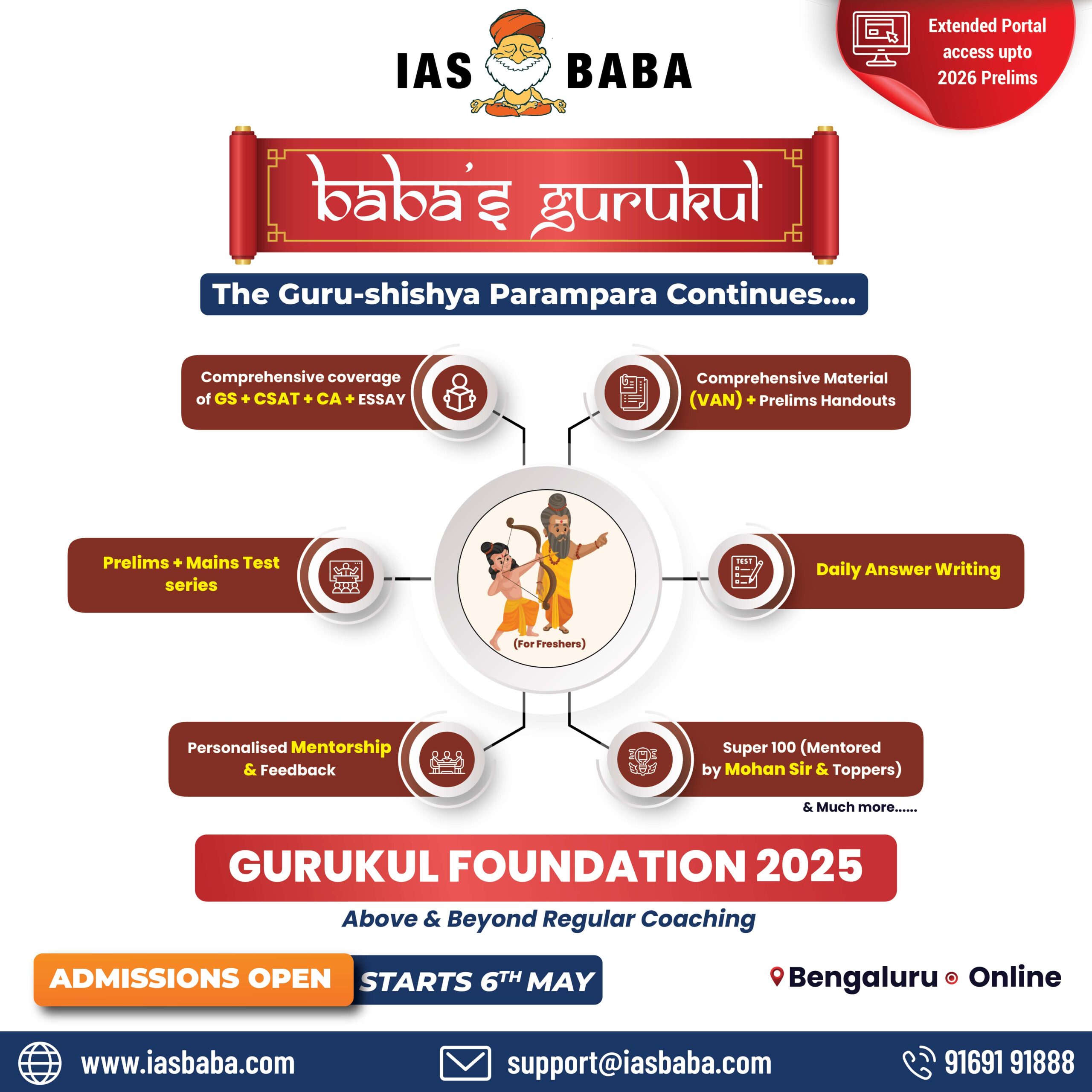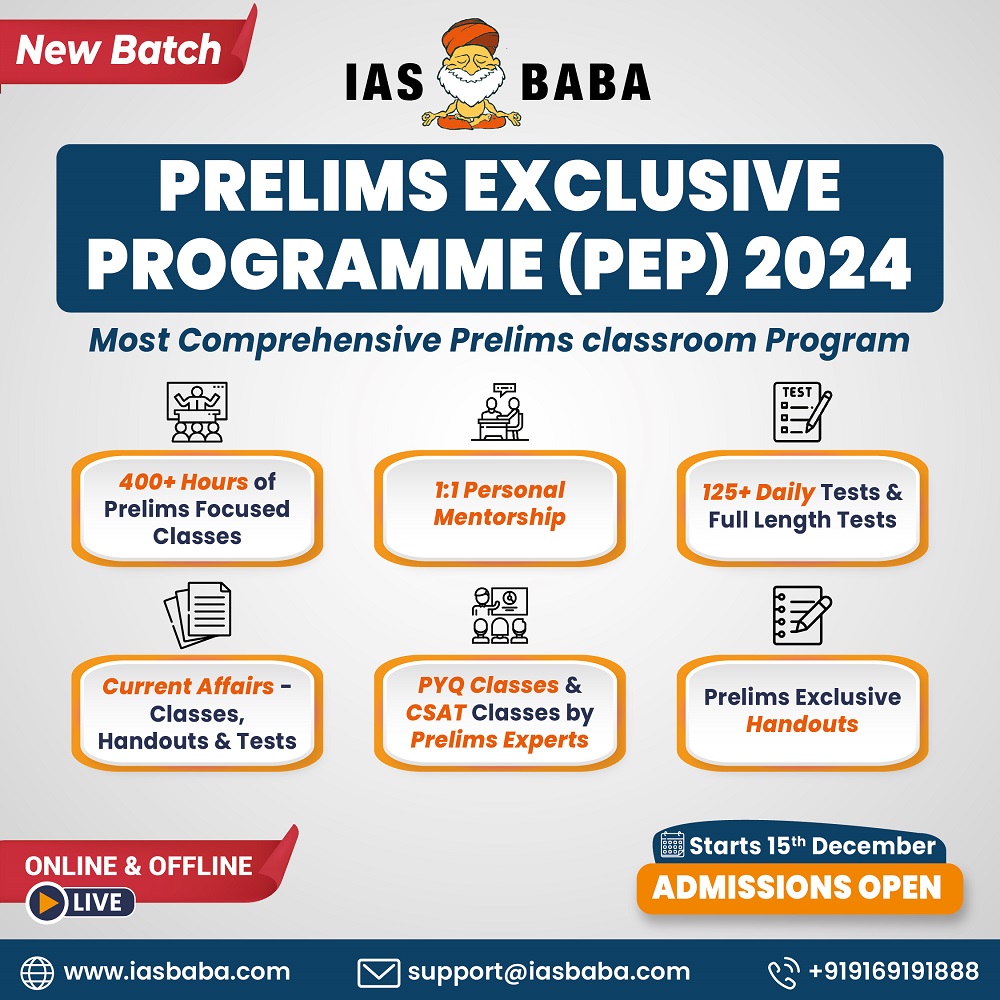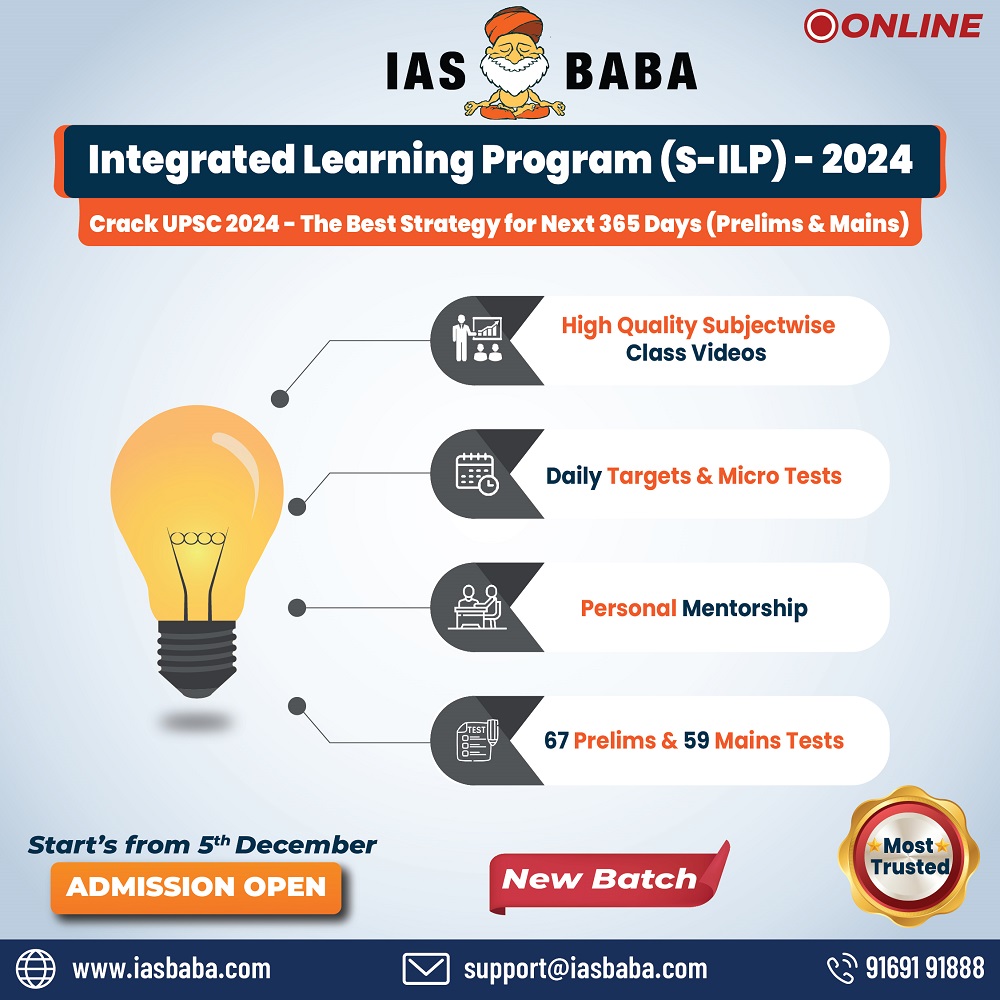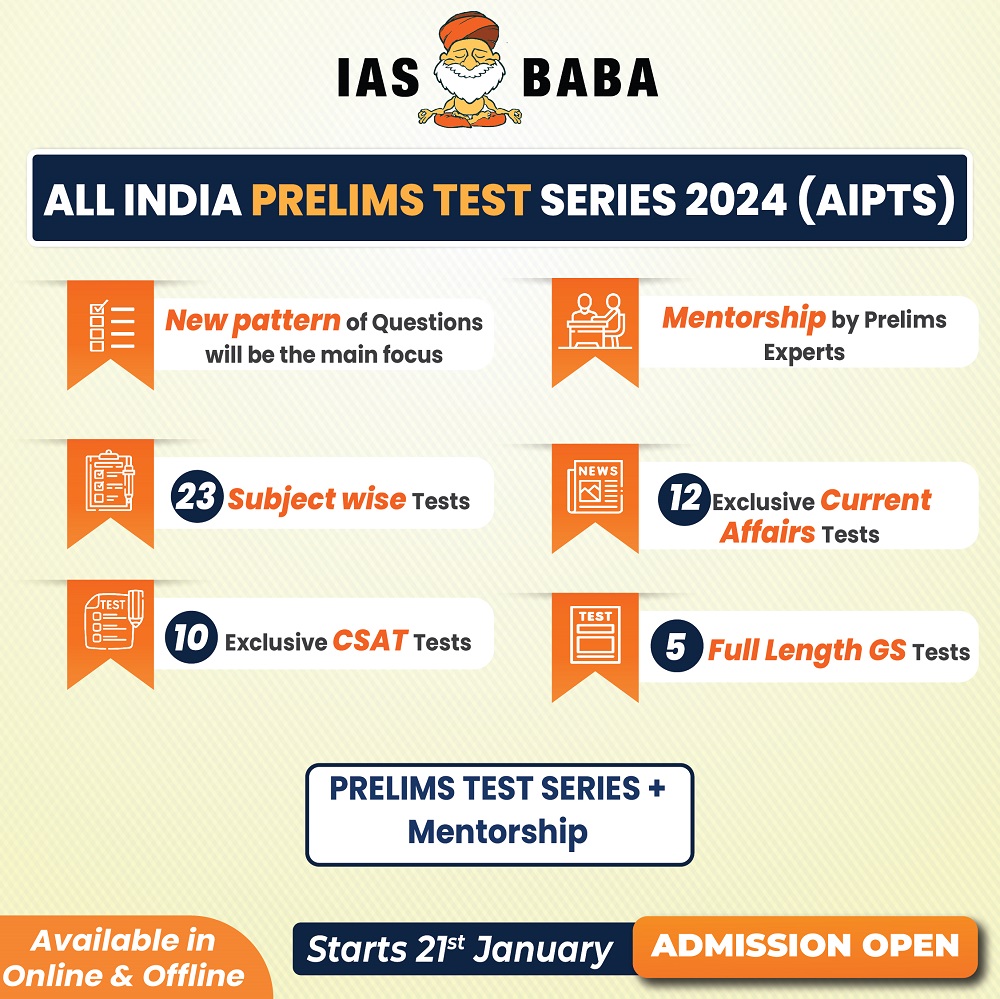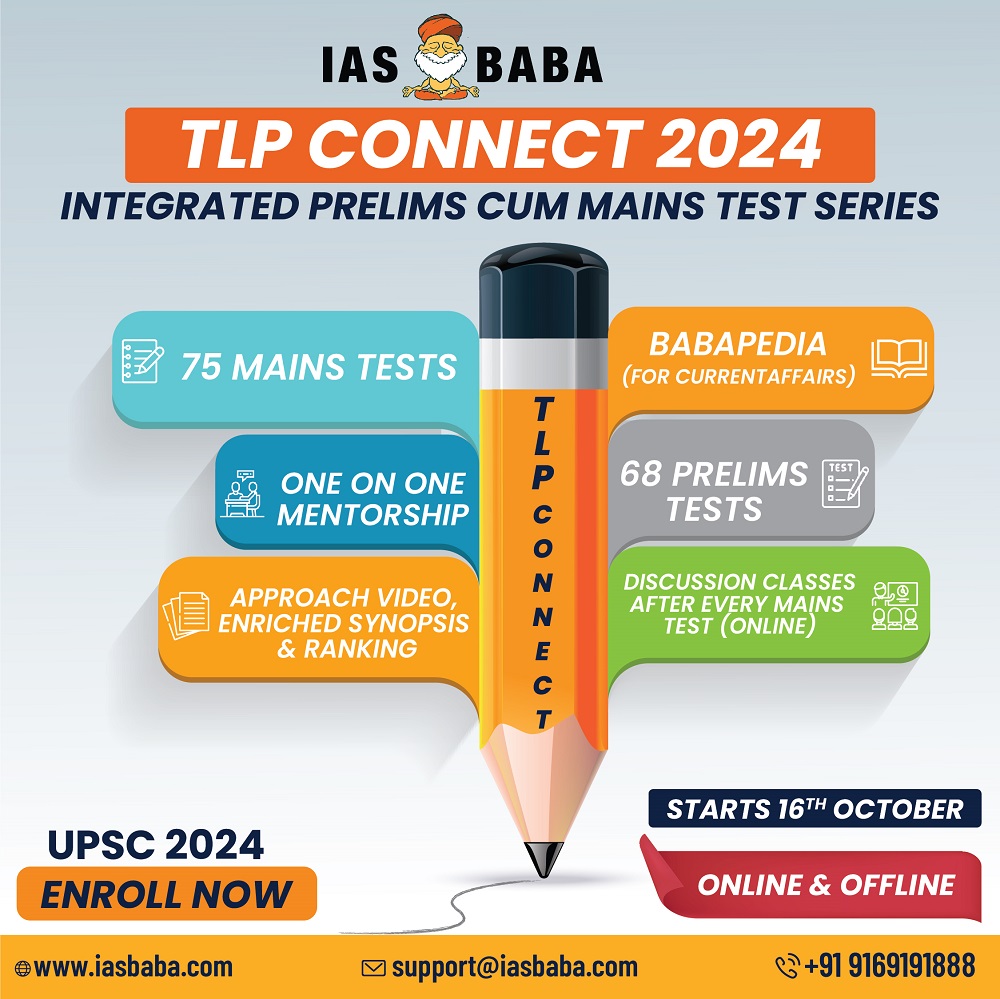IASbaba's Daily Current Affairs Analysis
IAS UPSC Prelims and Mains Exam – 22nd June 2020
Archives
(PRELIMS + MAINS FOCUS)
Protected Areas in News: Dibru-Saikhowa National Park and Maguri-Motapung wetland
Part of: GS-Prelims and GS-III – Environment and Biodiversity; Protected Areas
Why in news?
- The recent Baghjan oil blowout in Assam have affected the flora, fauna and wetlands which is close to the Maguri-Motapung wetland and the ecologically fragile Dibru-Saikhowa National Park.
Key Prelims Pointers:
- Dibru-Saikhowa is a National Park as well as a Biosphere Reserve situated in the south bank of the river Brahmaputra in the extreme east of Assam state.
- The park is bounded by the Brahmaputra and Lohit Rivers in the north and Dibru river in the south.
- The forest type of Dibru-Saikhowa comprises of semi-evergreen forests, deciduous forests, littoral and swamp forests and patches of wet evergreen forests.
- The Park is renowned for natural regeneration of Salix trees and a safe haven for many extremely rare and endangered species of Wildlife.
Do you know?
- National park is an area which is strictly reserved for the betterment of the wildlife & biodiversity, and where activities like developmental, forestry, poaching, hunting and grazing on cultivation are not permitted. Their boundaries are well marked and circumscribed.
- Total number of National Parks in Assam is Five (5). Kaziranga National Park, Manas National park, Orang National Park, Dibru-Saikhowa National Park and Nameri National Park.
SC verdict on Secrecy of ballot
Part of: GS-Prelims and GS-II – Polity and Governance; Elections
In News:
In a recent judgment, the Supreme Court held that –
- Secrecy of ballot is the cornerstone of free and fair elections.
- The principle of secrecy of ballots is an important postulate of constitutional democracy.
Do you know?
- ‘Secret Ballot’ refers to the process of casting of a vote by a voter in such a way that no one comes to know in whose name the voted is casted except by the voter.
- Section 94 of the Representation of the People Act upholds the privilege of the voter to maintain confidentiality about her choice of vote.
For more information, read – Enhance Voter Secrecy- Use of ‘Totaliser’ machines
Think! – How is secrecy of ballot related to free and fair election? Discuss.
Jal Jeevan Mission (JJM)
Part of: GS-Prelims and GS-II – Government Schemes and Programmes; Governance issues
About Jal Jeevan Mission (JJM)
- In August, 2019, Government of India launched Jal Jeevan Mission (JJM).
- JJM aims at providing potable water at service level of 55 litre per capita per day (lpcd) to every rural household through Functional Household Tap Connection (FHTC) by 2024.
- The fund sharing pattern between the Centre and states is 90:10 for Himalayan and North-Eastern States, 50:50 for other states, and 100% for Union Territories.
Why JJM is in news?
- There has been a 45% shortfall in financing the JJM by both the Centre and the States in its first year of 2019-20. Similarly, in 2020-21 as well, there has been a 32% shortfall at the Central level.
- Only 18% of households are currently covered.
- So, Jal Shakti Ministry is pitching for additional funding of Rs. 82,000 crore from the 15th Finance Commission for the project.
- Jal Shakti Ministry to release grants or funds to the panchayats, to ensure that they follow the JJM’s five-year village action plans (VAP). (Criticism – It doesn’t empower panchayati raj institutions and against the decentralisation process)
Do you know?
Every village will prepare a Village Action Plan (VAP) which will have three components:
- Water source and its maintenance
- Water supply and
- Grey-water (domestic wastewater) management.
For more, refer: http://jaljeevanmission.gov.in/
Operation Samudra Setu
Part of: GS-Prelims and GS-III – Disaster Management
In News:
- Operation Samudra Setu aims to repatriate citizens stuck abroad due to the COVID-19 pandemic.
- Amphibious vessel INS Airavat to bring back 198 passengers from Maldives.
- Earlier, INS Jalashwa and INS Magarhad evacuated 2,874 individuals from the Maldives and Sri Lanka.
(MAINS FOCUS)
HEALTH/ GOVERNANCE/ SOCIETY
Topic: General Studies 2:
- Government policies and interventions for development in Health sectors and issues arising out of their design and implementation.
Mental Healthcare: Issues & solutions
Context: The suicide of the actor Sushant Singh Rajput has brought to the fore the significance of the mental health in contemporary times.
Did You Know?
- Section 309 of the Indian Penal Code had criminalized attempted suicide but this was removed through Mental health care Act 2017
- The Sustainable Development Goals target 3.4 and 3.5 talks about reducing mental illness within the population.
Issues related to Mental Health care in India
- Neglected Area: Mental health which forms the core of our personhood is often neglected which impeded the development of an individual to full potential.
- Stigmatised: Mental health illness is often considered as Taboo that leads to reluctance on part of family members to seek diagnosis & treatment for the patient
- Burden of Demography: According to WHO, the burden of mental disorders is maximal in young adults. India being a young country (nearly 50% of its population below the age of 25) will face increased burden of mental illness in short term
- Major contributor to the burden of illness: An estimated 150 million people across India are in need of mental health care interventions, according to India’s latest National Mental Health Survey 2015-16.
- Disproportionate impact: It is the poor, dispossessed and marginalised who bear the greatest burden of mental health problems, but historically their sufferings are dismissed as a natural extension of their social and economic conditions
- Post-Treatment gap: There is need for proper rehabilitation of the mentally ill persons post his/her treatment which is currently not present.
- Lack of Specialists: Low proportion of mental health workforce in India (per 100,000 population) include psychiatrists (0.3), nurses (0.12), psychologists (0.07) and social workers (0.07).
- Dangers of increase in post-COVID order: Mental health problems, tend to increase during economic distress leading to reduction in life-expectancy. This has been described by Nobel prize winning economist, Angus Deaton, as “Deaths of Despair”
- Prone to abuse: Mentally ill patients are vulnerable to and usually suffer from drug abuse, wrongful confinement, even at homes and mental healthcare facilities which is a cause of concern and a gross human right violation.
- Affordability issues: Due to inadequate number of mental health caretakers, such service if often concentrated in Urban areas and are also expensive
- Needs Unique approach: There is no one-size-fits-all prescription for mental health issues as they are intimately intertwined with unique, personal life stories.
So, what’s the solution?
- Awareness: People should be made aware of significance of mental health, as much as that of physical health.
- Destigmatising the issue: Sharing one’s story about mental health (through media campaigns) is the most effective strategy to reduce stigma attached with mental illness
- Community Approach: There is need to deploy community health workers who, with appropriate training and supervision, effectively deliver psychosocial interventions for the needy
- Increase Funding: State governments need to scale up its psychosocial interventions through community health workers
- Broadening the scope: Mental health care must embrace the diversity of experiences and strategies which work, well beyond the narrow confines of traditional biomedicine with its emphasis on “doctors, diagnoses and drugs”
- Digital initiatives: To help improve rural India’s mental health through telemedicine, initiatives like Schizophrenia Research India’s (SCARF) mobile bus clinic is being run by an NGO. There is need for scaling up such initiatives through public-private collaboration to bridge the rural-urban divide
- Measures that can be taken at individual level by people who are suffering from mental illness
- Reminding oneself that all of humanity is goes through tough times
- Doing something for others, for science has shown that care-giving and community service makes life more meaningful & rewarding
- Discussing with friends & families about the issues being faced
Connecting the dots:
- Mental health care Act 2017
INTERNATIONAL/ SECURITY
Topic: General Studies 2,3:
- India and its neighborhood- relations
- Challenges in managing the borders
Galwan Valley: In depth view
Context: The deterioration in India-China relationship in recent past because of violence in Galwan Valley
Where is Galwan Valley?
- The valley refers to the land that sits between steep mountains that buffet the Galwan River.
- The river has its source in Aksai Chin, on China’s side of the LAC, and it flows from the east to Ladakh, where it meets the Shyok river on India’s side of the LAC.
- The valley is strategically located between Ladakh in the west and Aksai Chin in the east (currently controlled by China)
- At its western end are the Shyok river and the Darbuk-Shyok-Daulet Beg Oldie (DSDBO) road.
- Its eastern mouth lies not far from China’s vital Xinjiang Tibet road, now called the G219 highway.
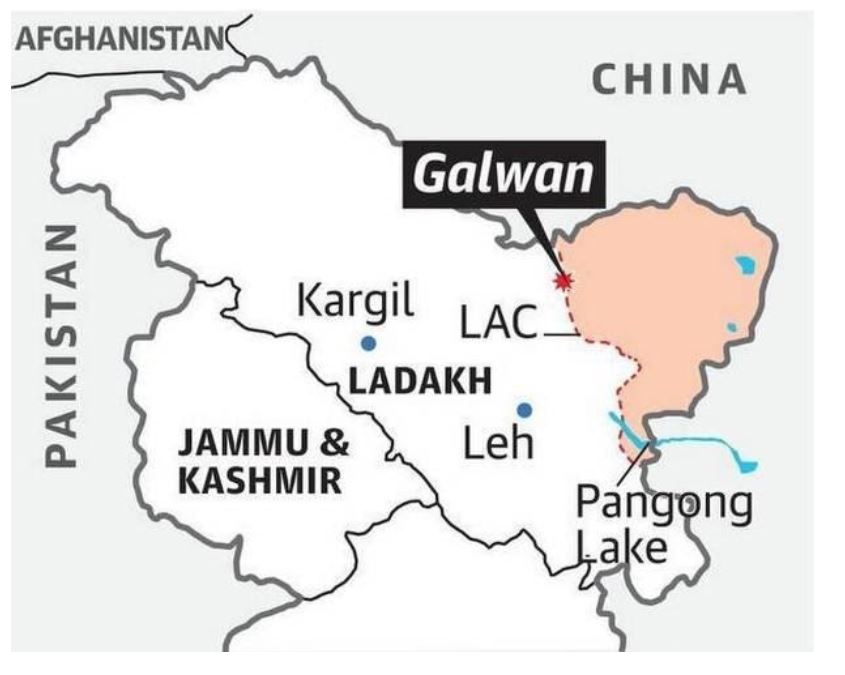
Source: The Hindu
What is the recent flare-up in this sector?
- The Line of Actual Control (LAC) lies east of the confluence of the Galwan and Shyok rivers in the valley, up to which both India and China have been patrolling in recent years.
- The LAC refers to territory under the effective control of each side, not to their entire territorial claim.
- For instance, India’s territorial claims extend 38,000 sq km on the other side of the LAC across all of Aksai Chin, but the LAC India observes runs through the valley.
- However, Beijing is now saying the entire Galwan valley is on its side of the LAC, which pegs the LAC further west near the Shyok river.
- The DSDBO road has helped India plug the infrastructure gap near the LAC region. This is being viewed with suspicion by China which wants to maintain its upper hand in the region vis-à-vis military mobilization
- India has rejected the claim as “exaggerated and untenable”.
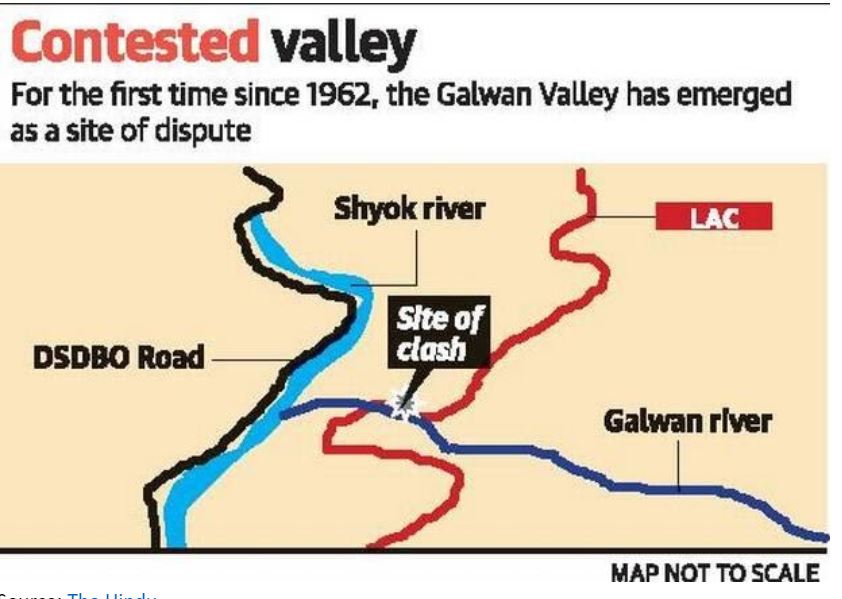
Source: The Hindu
Are China’s claims new?
- In 1959, then Premier Zhou Enlai said a 1956 map portrayed the correct alignment. This showed the entire Galwan Valley as a part of India.
- However, in June 1960 China put out a map claiming sovereignty over the valley. A Chinese map from November 1962 also claims the entire valley, but subsequent maps have not shown the western tip of the river as a part of China.
- Therefore, most Chinese maps show most of Galwan river on China’s side of the line, but short of the confluence.
- By now staking a claim to the entire Galwan Valley and up to the confluence of the rivers, China is, in India’s view, unilaterally altering the LAC here.
Are there any initiatives to deal with this differing perception on LAC?
- According to the 1993 Border Peace and Tranquility Agreement (BPTA), India and China agreed to “strictly respect and observe the LAC between the two sides”.
- This referred to the LAC at the time, rendering irrelevant the line of actual control in 1959 or 1962
- It also says that when necessary, the two sides shall jointly check and determine the segments of LAC where they have different views as to its alignment
- Clarifying the LAC has also been explicitly codified in the 1996 agreement on confidence-building measures and subsequent agreements.
Why the problem in finding a resolution?
- China has refused to exchange maps in the western sector to take the resolution process forward.
- China appears to view an unsettled border as holding some leverage with India, one of the many pressure points it could use to keep India off-guard
Conclusion
Apart from insisting on a timely and early clarification of the LAC, India should take a long view of realigning its South Asia policy (to counter-balance China)
Connecting the dots:
- China’s Belt & Road Initiative
- India’s Act East Policy
(TEST YOUR KNOWLEDGE)
Model questions: (You can now post your answers in comment section)
Note:
- Correct answers of today’s questions will be provided in next day’s DNA section. Kindly refer to it and update your answers.
- Comments Up-voted by IASbaba are also the “correct answers”.
Q.1 Maguri-Motapung wetland, which was in news recently, is located in –
- Assam
- Arunachal Pradesh
- West Bengal
- Manipur
Q.2 Consider the following statements regarding Dibru-Saikhowa National Park:
- It is an identified Important Bird Area (IBA) notified by the Bombay Natural History Society.
- It is the largest Salix swamp forest in north-eastern India.
Which of the above is/are correct?
- 1 only
- 2 only
- Both 1 and 2
- Neither 1 nor 2
Q.3 Consider the following statements about Jal Jeevan Mission:
- The chief objective of the Mission is to provide piped water supply (Har Ghar Jal) to all rural households by 2022.
- Jal Shakti Ministry is the nodal ministry for the implementation of the scheme.
Which of the above is/are correct?
- 1 only
- 2 only
- Both 1 and 2
- Neither 1 nor 2
ANSWERS FOR 20th June 2020 TEST YOUR KNOWLEDGE (TYK)
| 1 | B |
| 2 | D |
| 3 | C |
Must Read
About maternal Health:
About India’s border challenges with China & Pakistan:
About India’s need to improve exports potential:





